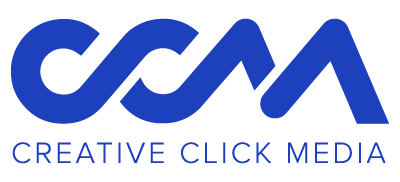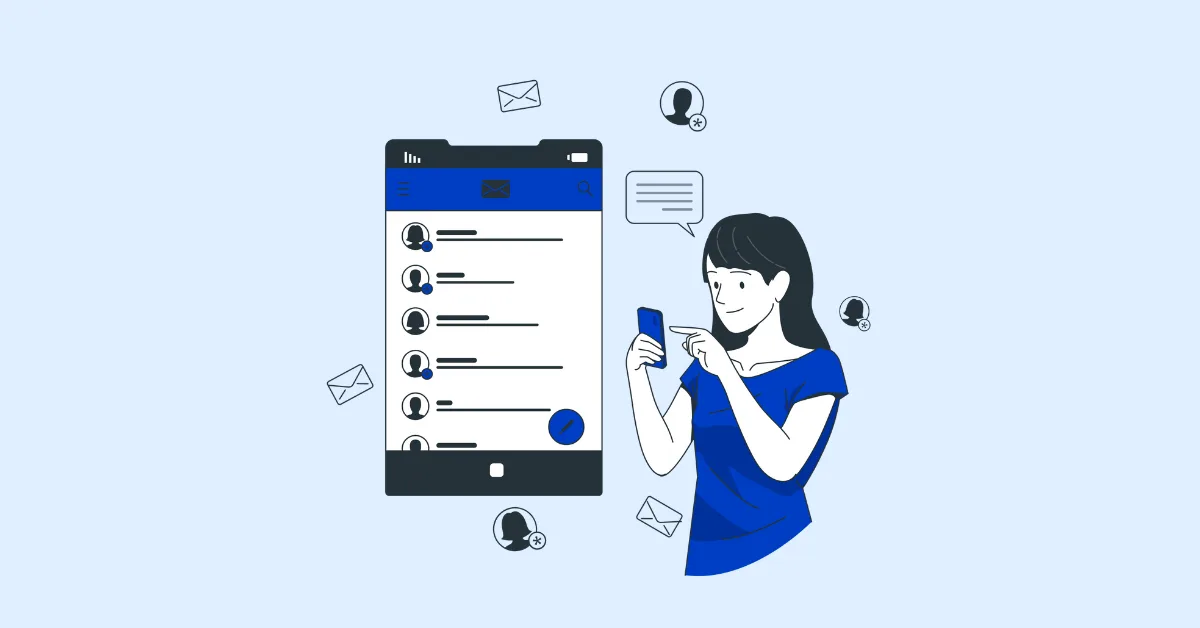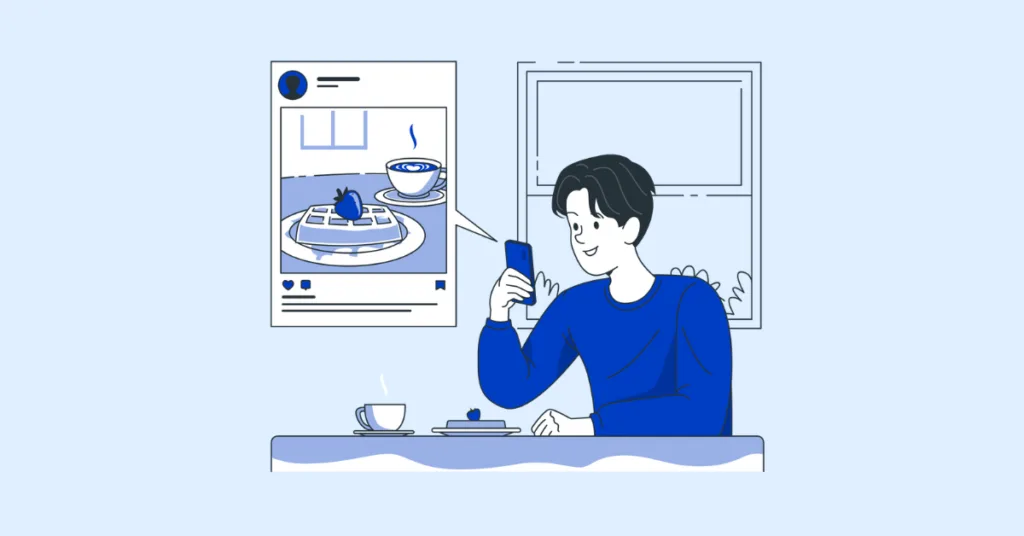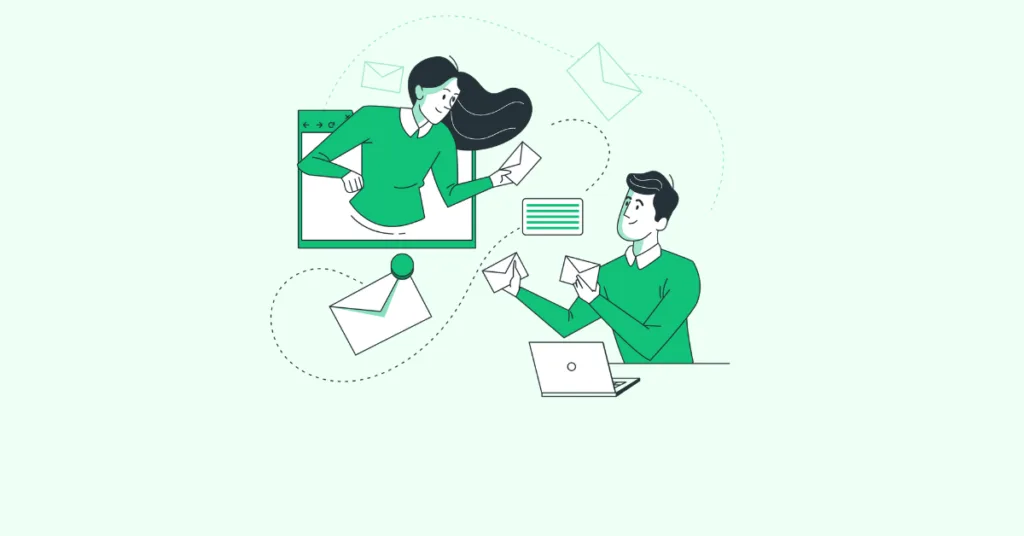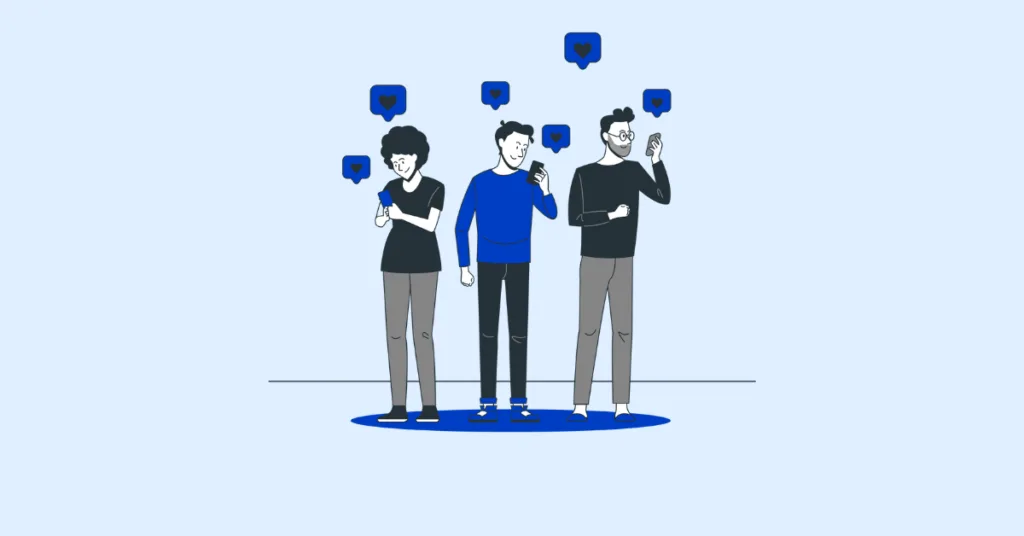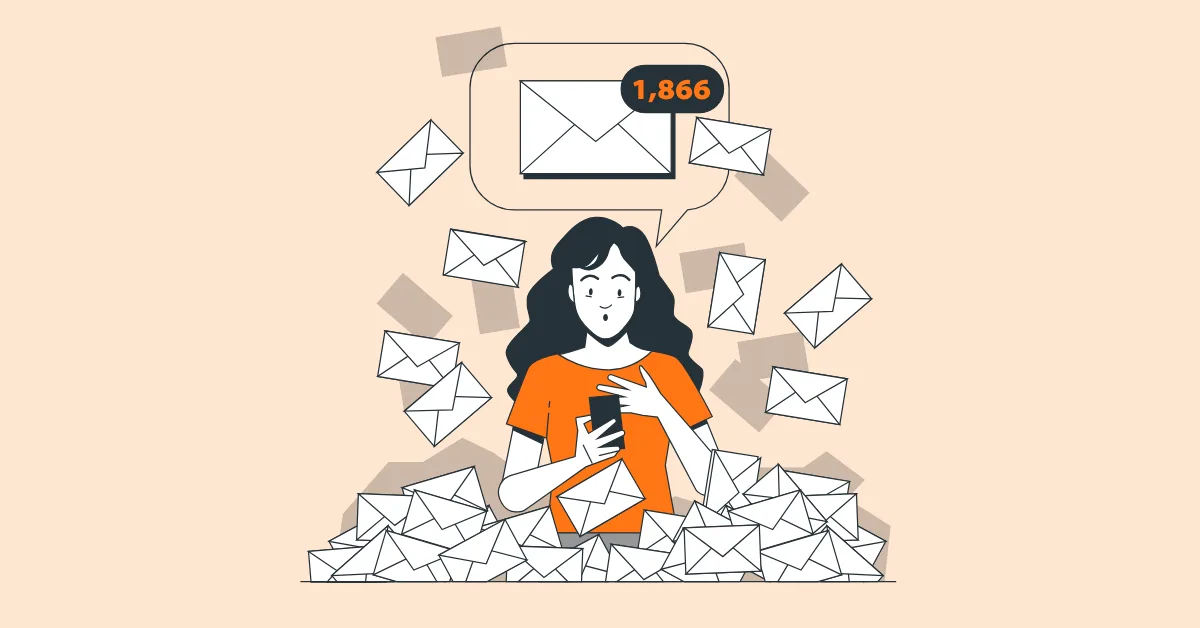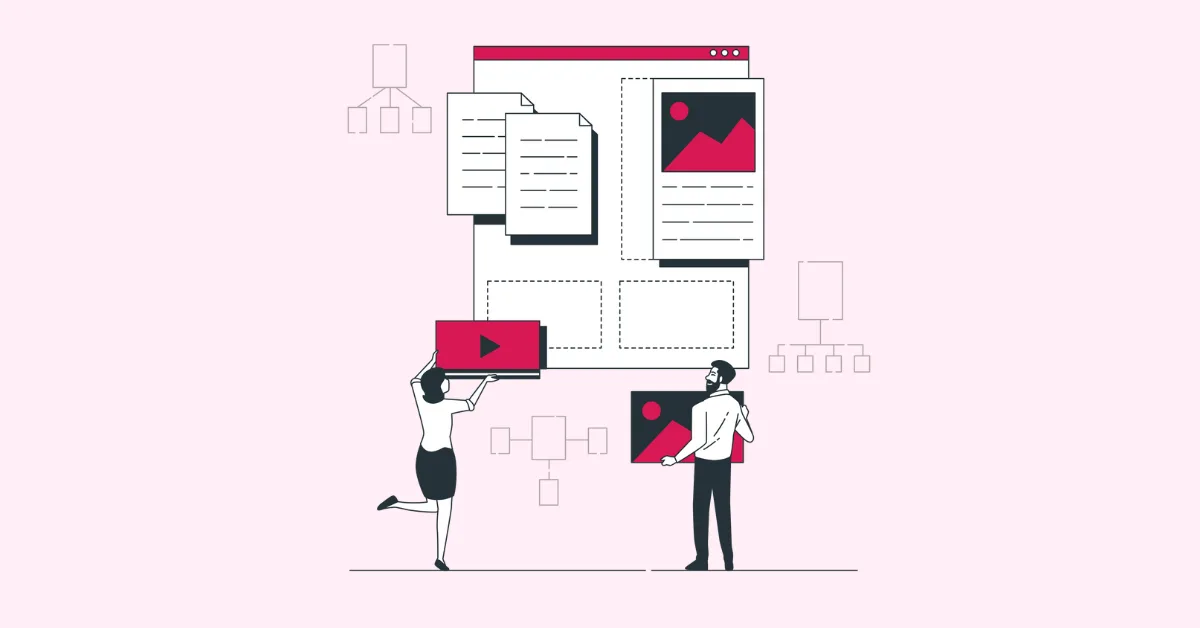It’s no secret that email marketing is a critical element of any marketing campaign for B2B and B2C businesses alike. Having this direct line of communication from your business to your inbox makes your subscriber list one of your company’s most valuable assets. Your subscribers are the backbone of any successful campaign, and if you aren’t segmenting them, you’re missing out on opportunities to better serve them. Your email marketing repertoire is only as good as the segments you create – and knowing how to segment email subscribers strategically and creatively could be the difference that increases your bottom line.
Why Should You Segment Your Subscribers?
Despite the fast paced nature of digital marketing trends, email marketing remains one of the most popular strategies for online success. Why is that? Because it works! Studies show that emails get 24 times higher conversion rates than social media posts, deliver double the revenue per customer and generate 22% more orders overall.
That said, it’s important to remember that your email subscribers are not created equally. Their motivations for joining your subscriber list are often vastly different from one another, as are the marketing messages that speak to their needs. Think about how you’d create a sales pitch for a potential client. You might have an overall message that you incorporate into every pitch, but you’d probably change the delivery and talking points based on the needs and interests of that potential client. After all, pitching products and services that aren’t relevant or necessary for their business could be the turn off that loses you the sale.
The same applies to your email marketing strategy. Rather than sending the same message to all of your subscribers, you can (and should) break down your audience into smaller groups based on factors like demographics, interests and their existing relationship with your company. Segmentation is a great way to increase the relevance of your email marketing by sending messages that are more applicable and interesting to your subscribers. It also helps you reach new customers who might not have otherwise engaged with your business.
Another great reason to segment your email subscribers is because there’s a good chance your competitors aren’t. In fact, 89% of businesses admit they do not segment their audiences. This provides your company with a huge opportunity to generate higher conversions and improve your email metrics using an underutilized and highly effective strategy.
How effective, you ask? Let’s take a look at email subscriber segmentation by the numbers:
- Segmented email campaigns yield a 50% higher click through rate than campaigns that are not targeted.
- Segmented emails increase sales and revenue by an average of 24%.
- 10% of consumers are annoyed by emails with little or no personalization.
- 58% of revenue generated stems from a segmented email campaign.
 How to Segment Email Subscribers
How to Segment Email Subscribers
Now that we’ve covered why to segment email subscribers, let’s take a deep dive into how to segment email subscribers. The beauty of email marketing segmentation is that there’s no true “right” or “wrong” way to do it. The way you choose to segment your audience is highly variable based on your customer base, industry and company goals. To help get you started, we put together 9 impactful segmentation categories to consider adding to your email marketing strategy:
Demographics
Segmenting your email subscribers by demographic is one of the simplest ways to define your audiences, but it can also be one of the most insightful. Think about the different demographic breakdowns that make up your audience, such as age, gender, occupation and so on. Then, think about how you can utilize targeted messaging to speak to their diverse interests and pain points.
Let’s take an ecommerce apparel shop running a 50% off sale, for example. Rather than sending the same email to their entire subscriber list, they may send three versions of the email to their three primary customer bases: adult women, adult men and juniors. Though the message itself stays the same, using different graphics, colors and phrasing to appeal to each demographic generally yields higher click through rates and sales than an untargeted email would.
Segmentation in Action:
Yoga and lifestyle brand Apeiron Yoga’s subscriber demographics can be broken down into two main groups: yoga hobbyists and yoga professionals. This was a critical distinction to make when it came time to create their Black Friday sales email campaign. 60% off yoga mat 12 pack bundles is a great deal for yoga studio owners who need to buy in bulk to stock their shelves, but it’s not exactly ideal for individual yogis who don’t need that many yoga mats for themselves. Segmenting our audiences enabled us to help them launch two simultaneous Black Friday email campaigns: one with the 60% off bundle for yoga studios, and another 60% off sale on yoga mats and apparel for all other subscribers.
 Industry
Industry
Segmenting your subscribers by industry works similarly to segmenting your subscribers by demographic. Though the message or offer itself might stay the same, the way it is delivered may benefit from being personalized to appeal to the needs and challenges of that particular industry.
Let’s use two industries our company works with often as an example: contractors and wellness professionals. We could send them the same email announcing a promotion for our web design services, or we could personalize the messaging slightly in a way that speaks to their industry. Think “While you’re busy building homes, we’ll be busy building your beautiful new website!” vs. “We’ll focus on the health of your website so you can focus on the health of your patients.” It’s a small change, but this added layer of personalization could be the element that clinches a conversion.
Location
Depending on the type of business you’re running, location-based messaging could be one of the most critical elements of your email marketing strategy. If your business only serves one geographic region, for example, it’s critical that your emails are segmented specifically for local subscribers. The same can be said if your business regularly holds open houses or events for local business owners or community members.
If your organization operates nationally or even internationally, you might be under the impression that segmenting your subscribers based on location is a waste of time. While it may not be as pertinent as it would be for businesses locked into a smaller service radius, location-based email segmentation can still be beneficial to businesses without geographical limitations. If a retail chain is opening a new brick-and-mortar location in Philadelphia, for example, it may be beneficial to email your subscribers from Pennsylvania, New Jersey and Delaware with a coupon for opening day. This type of email wouldn’t be beneficial to someone living outside of the tri-state area, and receiving it could lead to a wave of unsubscribes.
Intention
Not all email subscriptions are created equally. In fact, there are countless reasons someone might subscribe to your company’s emails. Operating under the assumption that each of these reasons are similar enough to fall under the same marketing umbrella is one of the most common reasons a user might unsubscribe.
You might be asking yourself, “But how do I know why this subscriber is interested in my emails?” It’s true – sometimes you can’t. However, there are ways that you collect that information. One common way to glean intel into the intentions of your email subscribers is to include an opt-in form before they join your list. By asking users to check off which types of emails they are interested in receiving (newsletters, promotions, etc.), you are ensuring that the content you are sending is of the utmost relevance to their interests.
Segmentation in Action:
Take a look at CapFlow Funding’s subscriber list:
 See the “Tags” tab? That’s what denotes which service each of these subscribers is interested in: insurance, staffing and so on. Having this information on hand allows CapFlow Funding to easily ensure any emails related to their insurance services are only being shared with those users who have indicated that they are interested in insurance.
See the “Tags” tab? That’s what denotes which service each of these subscribers is interested in: insurance, staffing and so on. Having this information on hand allows CapFlow Funding to easily ensure any emails related to their insurance services are only being shared with those users who have indicated that they are interested in insurance.
Sales Funnel Position
How many times have you left a product in your cart, only to receive an email hours later reminding you to check out? Has a quick browse through a shoe website ever prompted a “We saw you checking out sneakers!” message in your inbox? These are called re-engagement emails, and as the name suggests, they aim to engage with consumers who have begun their journey through the sales funnel and nudge them towards making a purchase.
When you think about how to segment email subscribers, sales funnel position is one of the most common categorizations – and for a good reason. Approximately 45% of cart abandonment emails are opened, and 21% of those who do open it will click on a link that takes them to the company’s website. From those 21% of users who do click through, 50% will make a purchase. We’re no mathematicians, but it’s clear that sending emails that engage with potential customers from where they left off in the sales funnel yields a higher purchase rate than not engaging with them at all.
 Open Rate
Open Rate
The frequency at which a subscriber opens emails from your company can tell you a lot about their likelihood of converting into a customer. In fact, there’s a case to be made that your campaign’s success is massively determined by your subscriber’s level of engagement with your emails. If they’re not opening them, chances are that they aren’t clicking on any links inside either.
Let’s use email subscribers on two ends of the open rate spectrum as an example: one that opens emails from your company 90% of the time, and one that opens emails from your company 5% of the time. The high engagement subscriber is clearly interested in what your company is doing, and may even benefit from receiving more frequent emails. That’s not to say that the subscriber who opens your emails 5% of the time is a dead lead – they might just not resonate with your current email marketing messaging. If your company regularly sends text-based emails like newsletters, for example, try sending these low-engagement subscribers a visual-based email instead. Experiment with A/B subject lines to see if another style yields higher open rates. If they still aren’t opening your emails, it may be time to remove these users from your subscription list.
Purchase Frequency
Open rate and purchase frequency go hand in hand when deciding how to segment your email subscribers, particularly for ecommerce businesses. Some customers will order from a business regularly, while others might leave long gaps between purchases. No matter how frequently or infrequently a customer makes a purchase from your business, the fact that they stay subscribed to your email list means they are still interested in making another purchase in the future. The key to moving them down that sales funnel sooner may require some personalization on your end based on their previous buying habits.
Think about the purchase patterns you notice within your own customer base, and modify your email messaging for each segment. The segment of your subscribers that makes a purchase every month are highly motivated to make a purchase, and would likely appreciate receiving a high frequency of emails from your company in their inbox. Customers whose purchases are few and far between, on the other hand, may need a little extra motivation to place their next order. If you’ve ever received a “We miss you!” email with a coupon code, that means you’ve made it to that brand’s segment of email subscribers that they deem infrequent shoppers. Was that email the nudge you needed to make your next purchase? If so, you know firsthand that this type of segmentation works!
Purchase History
Well, maybe we got ahead ourselves. Purchase frequency implies that every subscriber on your list has made a purchase in the past, but that could very well not be the case. Many potential customers will join your email list before they are ready to do business with your company, either to wait for a sale or just to keep your business top of mind for whenever they are ready to take action. This provides you with two segments to tailor your email marketing content towards: potential customers and current customers.
As mentioned, many potential customers will subscribe to a company’s email list in hopes that they will receive a “welcome” discount or special offer. This type of email marketing strategy has become increasingly popular, especially in ecommerce markets. If your business isn’t doing this, you may be running the risk of losing customers to your competitors who are. That’s not to say your current customers will be left out in the dust – after all, we want them to become repeat customers, don’t we? One great way to do this is to send them exclusive offers or previews specifically for customers who are currently working with your business or have in the past.
Segmentation in Action:
A recent example of where we used this kind of potential vs. current customer segmentation is in an email campaign with Apeiron Yoga. We had two critical goals to focus on ahead of the launch of Apeiron’s latest yoga mat line: drum up hype & generate presales. We did this by creating a pre-launch sale exclusively for past customers – the segment of their audience most likely to dive into the pre-sale excitement. The “Can we let you in on a little secret?” opening line made these customers feel like they were involved in something special, and using FOMO-driven language about the scarcity of the inventory encouraged fast action.
 Subscription Length
Subscription Length
Subscribing to a company’s email list is an unbinding commitment that can easily be undone in a few clicks once that content is no longer relevant to a user’s needs or interests. For this reason, you may want to consider showing your appreciation to the segment of your subscribers who have stayed loyal to your company long-term.
One way our company utilizes this subscription length segmentation strategy is by sending special offers to our subscribers who have been with us for more than a year. Each January, we send this segment a happy new year greeting along with an exclusive offer on one of our services as a thank you for their continued loyalty. Showing your appreciation can go a long way in making these subscribers feel valued by your company, and fostering these positive relationships will strengthen the likelihood of generating higher conversions.
Is it Time to Start Segmenting Your Email Subscribers?
Email segmentation is often overlooked, but it’s one of the most powerful tools available to marketers today. It allows you to identify your customers and prospects by their interests and goals, so that you can provide them with tailored content in a way that will resonate with them deeply. This kind of targeted marketing approach has led many businesses to happier clients, higher conversions rates and greater insights into what your audience is interested in.
Simply put – if you feel like you’re wasting your time sending emails to a large group of users who don’t care, it may be time for some segmentation. Not sure where to start? That’s where we come in! Our team of marketing mavens has the experience and intel needed to understand your diverse audience base and create compelling content that speaks directly to why they subscribed to your email list in the first place. A high-converting email marketing campaign is only a click away – contact us to get started.
